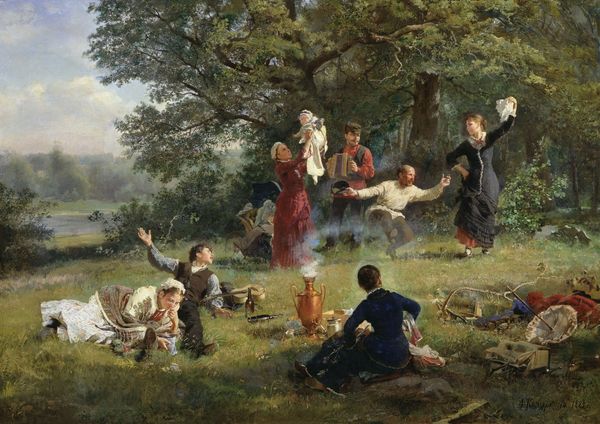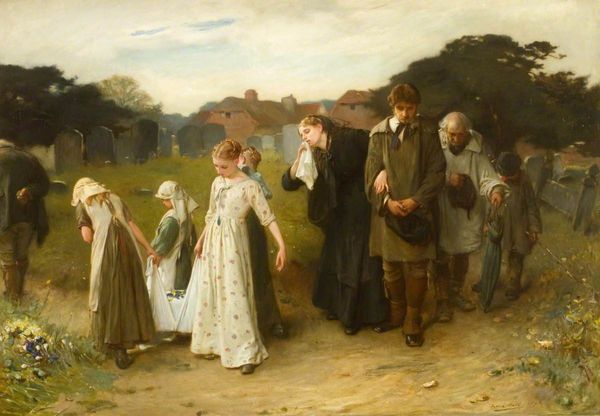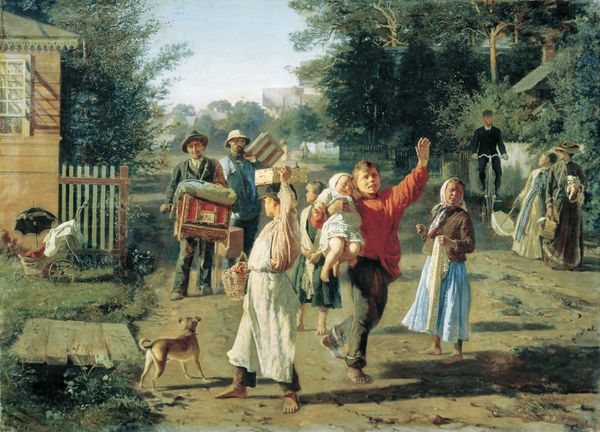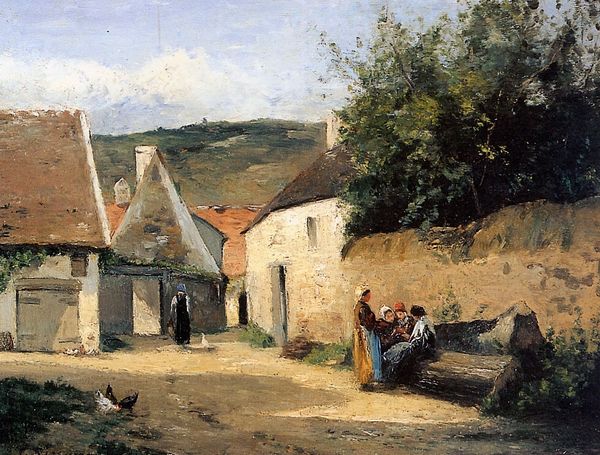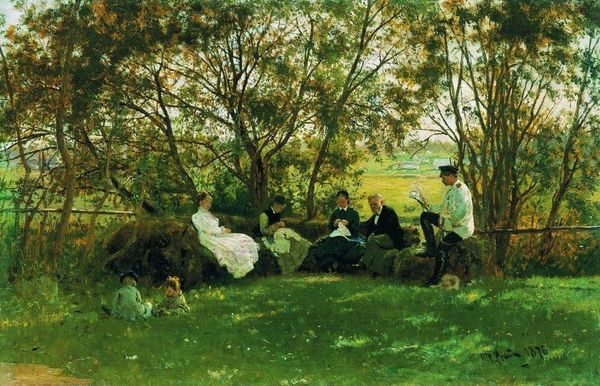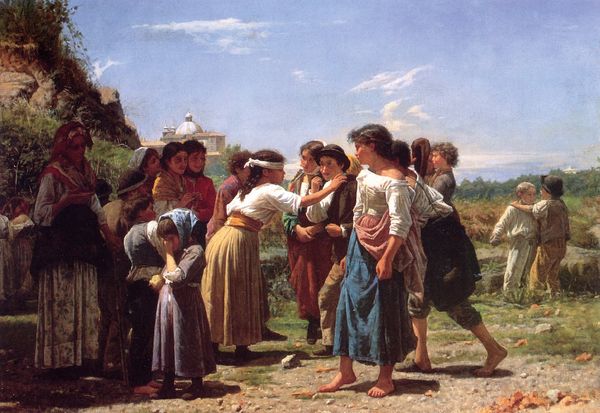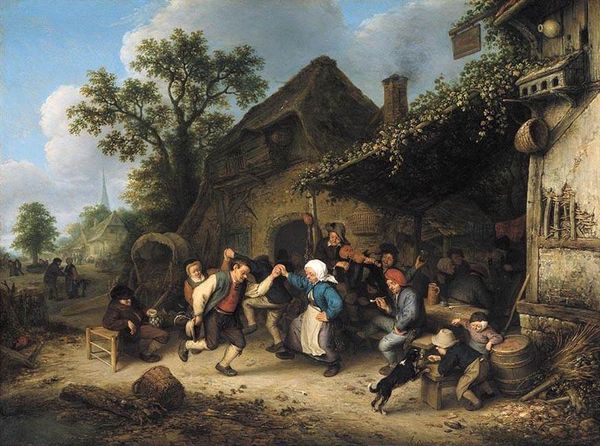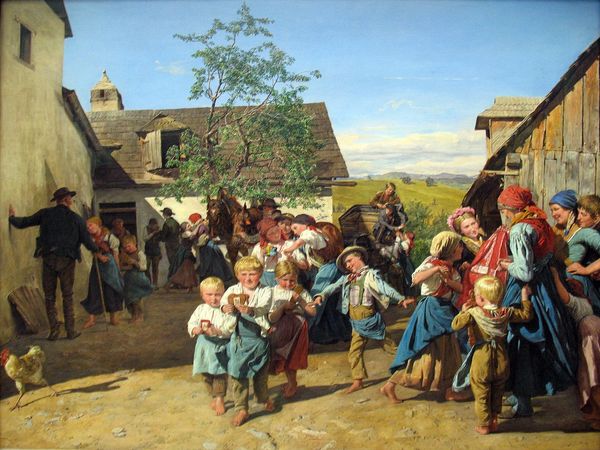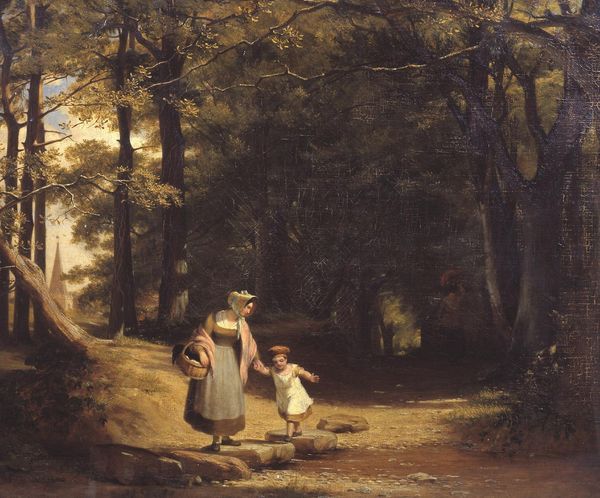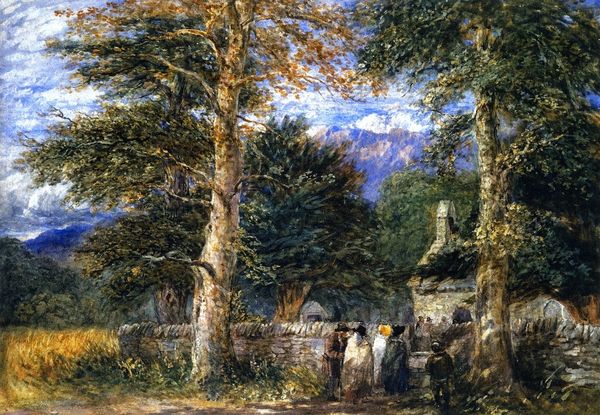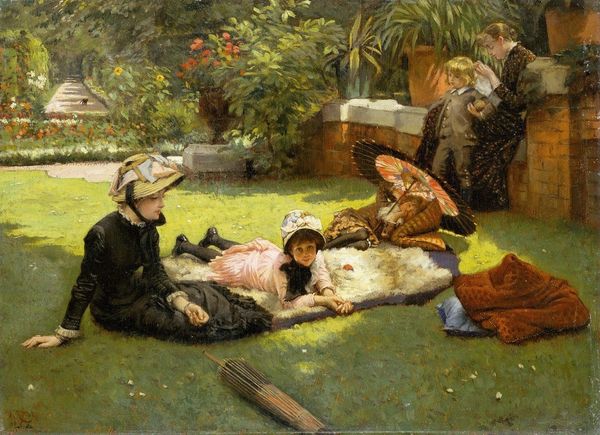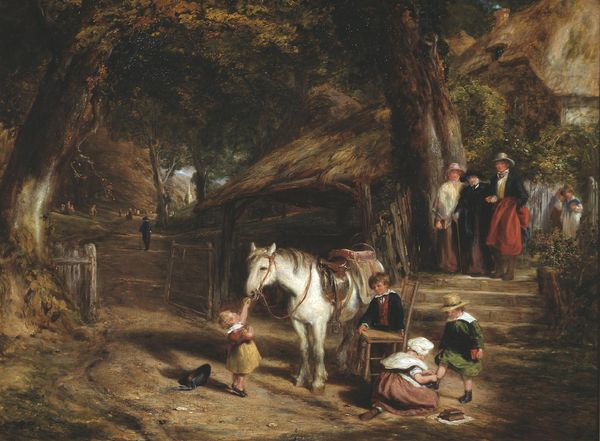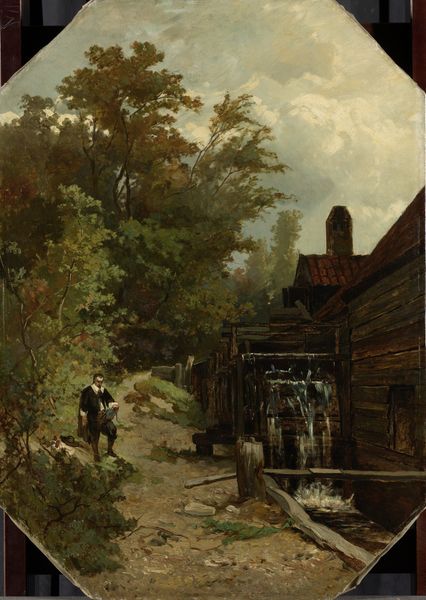
Copyright: Public domain
Curator: What a charming scene! This is "The School Belles," an oil on canvas created in 1877 by Frederick Morgan. It captures a group of young women, perhaps on holiday, gathered around a bridge in a verdant landscape. Editor: The first thing that strikes me is the almost manufactured idyll of it all. The sunlight seems too perfect, the figures arranged with a deliberation that speaks volumes about the cultural expectations surrounding leisure and social display. Curator: Indeed. The landscape is rendered in the romantic style, offering a sentimental view of rural life. Notice how Morgan uses the material properties of oil paint itself to depict the shimmering fabrics of the dresses. He seems fascinated by the textures, by how light reflects off the surface. This attention to detail emphasizes the consumption aspect of the era; clothing being such an essential factor for social gatherings and displays. Editor: And consider the bridge itself – a point of transition, yes, but also a powerful symbol of connection and societal structures. The figures are strategically positioned; with attention drawn to the women at the front. The architecture functions almost as a stage setting, emphasizing a deliberate separation between classes. This highlights the Victorian era, where one’s placement and interactions at such events mirrored social standing and privilege. Curator: I find the details regarding material production very thought-provoking here. Consider what it meant to create such a canvas – the resources invested, the labor involved not only in the painting but in the textile production that defines the attire. What do these layers of resources mean for the statement being portrayed by Morgan? Editor: I’d argue those sartorial choices speak to a powerful symbolism beyond just consumption; they reflect aspirations, dreams, perhaps even limitations dictated by societal roles and expectations. These details, even in casual strolls in a field, contribute to cultural symbolism ingrained through the subjects and the art itself. Note, too, the recurring presence of the dogs – ever-faithful companions, symbols of loyalty but also, significantly, indicators of social status. They further augment the display and add yet another layer of encoded information about the relationships displayed here. Curator: Seeing it through the lens of its production reveals an implicit critique maybe. Or at least a detailed documentation of resource allocation within that world, don't you think? Editor: Precisely! By unveiling symbols both small and monumental we see continuity in human desire for belonging while documenting a changing world. Curator: It certainly deepens my understanding of Victorian society, looking closely at its very physical creation. Editor: For me, tracing the painting's visual echoes, its subtle cues allows an extended emotional reflection that goes beyond just documenting history, thus truly preserving it through a medium that extends into present times.
Comments
No comments
Be the first to comment and join the conversation on the ultimate creative platform.
